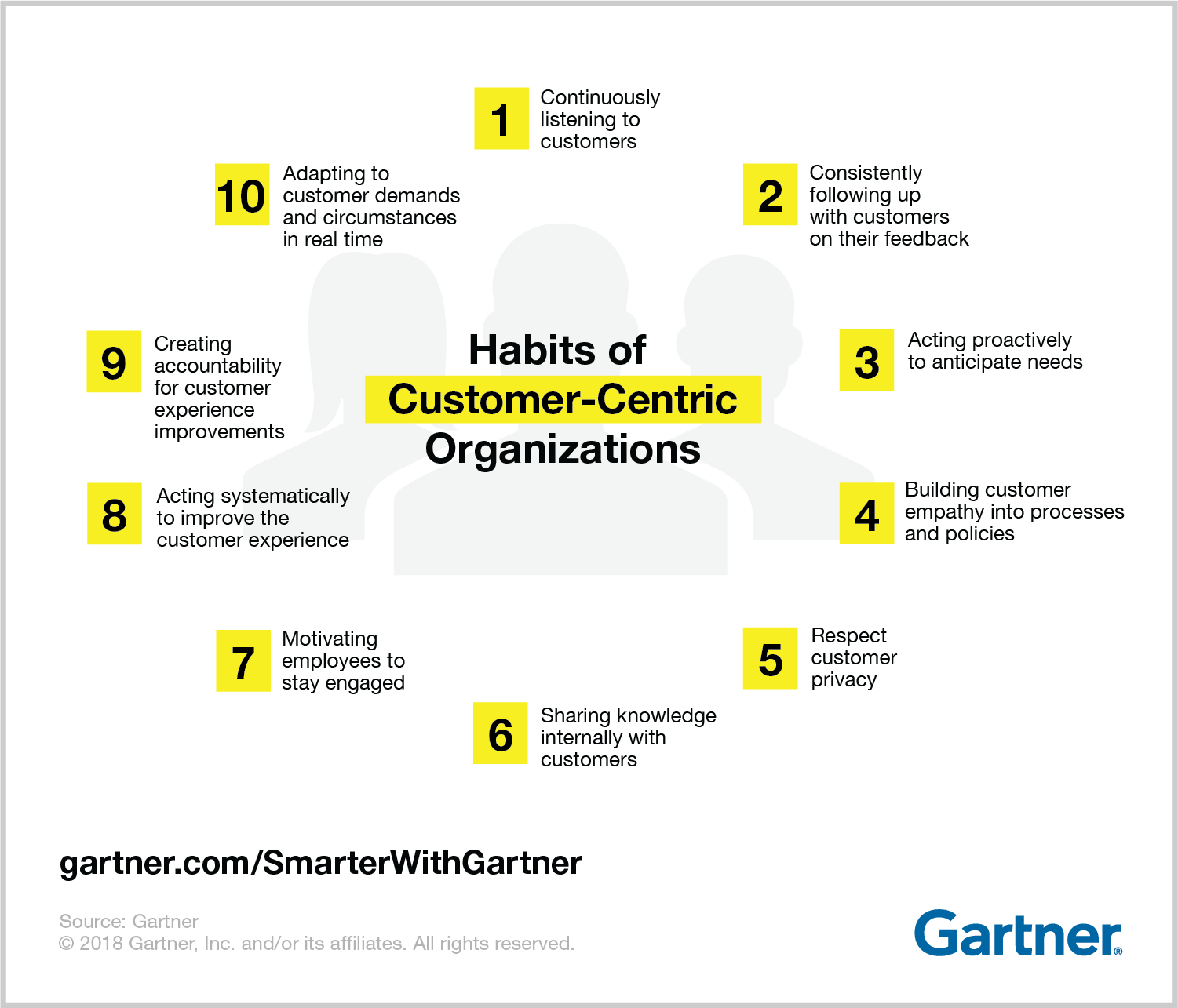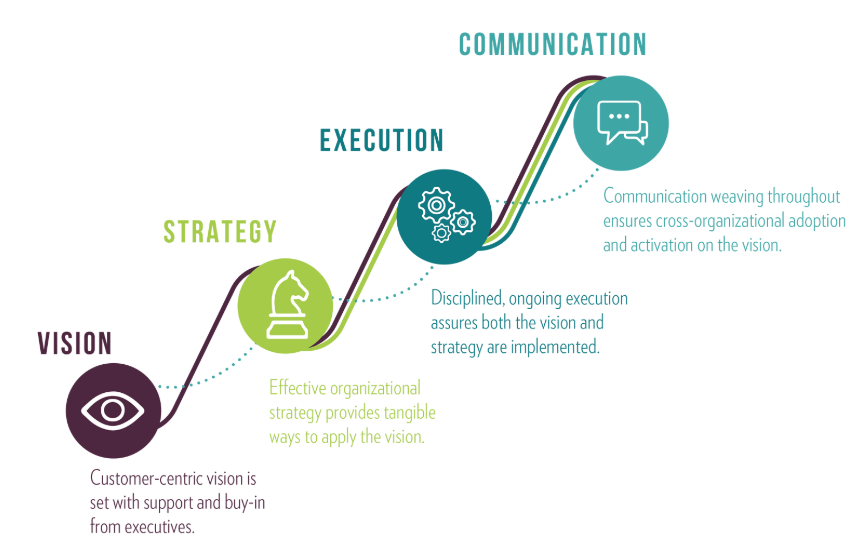5 steps to building a customer-centric company culture

.png)

.png)
At the end of the day, no matter what business you're in, it all comes back to the customers. In the age of instant gratification, it's more important than ever for companies to build a culture that understands the importance of customer satisfaction. One viral tweet or bad review can do major damage to your bottom line. And there's a significant correlation between a company’s customer service practices and its profits—a study by Deloitte found that customer-centric companies are 60% more profitable than their counterparts.
So, why do companies still struggle to maintain a customer-centric culture?
Because customer centricity isn't a box to be checked off. To be a customer-centric company, you need to focus on providing an exceptional customer experience before, during, and long after the sales cycle is complete. And you need to do that for all your good-fit customers—not just your big accounts.
Customer-centric companies are some of the most successful across all industries. It's that cultural mindset that has built heavyweight brands like Amazon or Slack. But customer centricity is not about simply giving your customers everything they want—it’s about building trust and inspiring confidence.

Let's take a look at the 5 key strategies you need to create a customer-centric culture in your own company.
Anticipating the needs of your customer is easier when you know what they're expecting from you. That's why gathering feedback from your existing customers should be done often and well. Feedback gives your team an understanding of what is missing, what should change, and what needs to stay the same.
Customers want to be heard. But don’t expect customers to spontaneously provide feedback—by some measures, “only 1 out of 26 unhappy customers complain. The rest churn.”
The number one way to gather feedback? Ask your customers directly.
Make your questions easy to respond to, and take into account any information you already have. When it comes to best practices for gathering feedback, there are a few popular avenues.
Whatever avenue you choose, make sure incorporate feedback into your work frequently. Once you identify areas of improvement, you can begin addressing your customers’ needs.
It doesn't do you or your customers any good if you gather feedback only to sit on the information and do nothing. With comments and concerns in hand, develop a process that allows you to rate feedback from most to least critical. The most critical needs are typically those that are consistently mentioned by your customers. If you start addressing these right away, you're already paving the road for better customer satisfaction in the future.

How do you know what your customer really needs (instead of just want they think they want)? Take your feedback and categorize it into buckets that relate to your business. For example, buckets that might work for a retail app or website would look something like this.
From there, you can dive even further into each bucket by listing the issues within them. It might look a little something like this:
Armed with your buckets and their corresponding problems, you can begin to track when an issue pops up repeatedly. From there, it's much easier for you to assess your customer needs and start addressing them head on. As you begin implementing new processes and fixing issues, you should develop a strategy for communicating these changes to your customer base.
One of the reasons companies have implemented customer satisfaction surveys like NPS and CSAT is because of how easy they make it for customers to provide insight. With so many brands and outside distractions competing for their attention, you want to grab customers when they’re actively thinking about your business. Making it quick and easy for customers to give feedback is the best way to get it.
There are many ways to communicate with your customers throughout the customer lifecycle.
Giving your customers the opportunity to choose how they want to engage with your company can help open up the lines of communication. You're reaching them where they already are and making it easy for them to tell you what they want you to hear.
The more lines of communication you open, the better you’ll understand your customers. More importantly, being able to communicate with your customers wherever they spend their time means you can consistently show them how you’re actively working to improve and meet their needs.
Now that you've got your feedback buckets in place, it's time to put them to work. Make reviewing feedback part of your monthly objectives. Set a recurring meeting with your team to review recent issues and discuss how to better service the problems.
Staying on top of customer issues and discussing resolutions helps keep your customer top of mind for the entire company. This doesn't mean you have to solve every problem in the moment—these meetings are a time to assess what you can change, what you can't, and what you can push off until later.
With resolutions in mind, remind your customers that you're listening. As you take stock of feedback and start to implement new strategies, take the opportunity to reach out and communicate those changes to them.
These monthly reviews also remind your team how important it is to focus on customer service. Which brings us to one of the most important aspects of building a customer-centric culture: fostering customer centricity across departments
The best customer-centric brands have made customers the cornerstone of their company culture. A customer-centric culture requires cross-team commitment and an understanding from every person in your company of the part they play in customer satisfaction.
The first thing to know is that passion is the bread and butter of any good customer-centric company. When you instill a sense of excitement and passion around customer service into every aspect of what you do, your employees will carry that with them into their day-to-day.
Make it clear that your customers are what make every team successful—from customer service to sales to marketing to engineering to product—every single department has a touch point with your customer. Therefore, they all have a hand in contributing to customer satisfaction.

Secondly, Put the needs of your customer ahead of everything else. That's not to say that you have to adopt the "customer's always right" mentality, but you should anticipate their needs and develop products to solve customer problems.
Finally, you should focus on building lasting relationships with your customers. That means engaging with them wherever they are on social media, consistently following-up with them, and rewarding them for their loyalty. Develop a customer communication strategy and continue to review customer feedback. When you put your customers at the center of everything you do—from product development to marketing strategies—it sets you apart from the competition.
We live in a culture that likes to share everything—good experiences and bad. Now, more than ever, it's important for brands to get to know and understand their customers on a deeper level.
Customer centricity isn't a box to be checked off. It's a business methodology that needs to be baked into your company culture. There are no shortcuts to attaining a customer-centric culture—it starts from within. When you have a team of employees that are passionate about the customer experience, excited to implement change, and ready to take on challenges, you're on the right track.